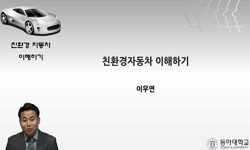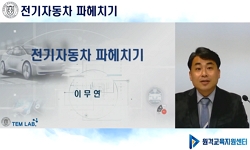Global automobile manufacturers are developing electric vehicles (EVs) to eliminate the pollutant emissions from internal combustion vehicles and to minimize fossil fuel consumptions for the future generations. However, EVs have a disadvantage of shor...
http://chineseinput.net/에서 pinyin(병음)방식으로 중국어를 변환할 수 있습니다.
변환된 중국어를 복사하여 사용하시면 됩니다.
- 中文 을 입력하시려면 zhongwen을 입력하시고 space를누르시면됩니다.
- 北京 을 입력하시려면 beijing을 입력하시고 space를 누르시면 됩니다.


A Study on the Application of Phase Change Material for Electric Vehicle Battery Thermal Management System using Dymola
한글로보기https://www.riss.kr/link?id=A104361918
- 저자
- 발행기관
- 학술지명
- 권호사항
-
발행연도
2017
-
작성언어
English
- 주제어
-
등재정보
SCOPUS,KCI등재
-
자료형태
학술저널
- 발행기관 URL
-
수록면
1889-1894(6쪽)
- 제공처
- 소장기관
-
0
상세조회 -
0
다운로드
부가정보
다국어 초록 (Multilingual Abstract)
Global automobile manufacturers are developing electric vehicles (EVs) to eliminate the pollutant emissions from internal combustion vehicles and to minimize fossil fuel consumptions for the future generations. However, EVs have a disadvantage of shorter traveling distance than that of conventional vehicles. To answer this shortfall, more batteries are installed in the EV to satisfy the consumer expectation for the driving range. However, as the energy capacity of the battery mounted in the EV increases, the amount of heat generated by each cell also increases. Naturally, a better battery thermal management system (BTMS) is required to control the temperature of the cells efficiently because the appropriate thermal environment of the cells greatly affects the power output from the battery pack. Typically, the BTMS is divided into an active and a passive system depending on the energy usage of the thermal management system. Heat exchange materials usually include gas and liquid, semiconductor devices and phase change material (PCM). In this study, an application of PCM for a BTMS was investigated to maintain an optimal battery operating temperature range by utilizing characteristics of a PCM, which can accumulate large amounts of latent heat. The system was modeled using Dymola from Dassault Systems, a multi-physics simulation tool. In order to compare the relative performance, the BTMS with the PCM and without the PCM were modeled and the same battery charge/discharge scenarios were simulated. Number of analysis were conducted to compare the battery cooling performance between the model with the aluminum case and PCM and the model with the aluminum case only.
목차 (Table of Contents)
- Abstract
- 1. Introduction
- 2. Simulation Model
- 3. Simulation
- 4. Conclusion
- Abstract
- 1. Introduction
- 2. Simulation Model
- 3. Simulation
- 4. Conclusion
- References
동일학술지(권/호) 다른 논문
-
- 대한전기학회
- Ankhzaya Baatarbileg
- 2017
- SCOPUS,KCI등재
-
Technology and Policy Post-Security Management Framework for IoT Electrical Safety Management
- 대한전기학회
- Donghyeok Lee(이동혁)
- 2017
- SCOPUS,KCI등재
-
FEA-based Torque Ripple and Noise Reduction of DC Motor for Automotive Air-Conditioning
- 대한전기학회
- Myeonghwan Hwang(황명환)
- 2017
- SCOPUS,KCI등재
-
New OTP Authentication Approach based on Table Pattern Schedule
- 대한전기학회
- B. B. Balilo
- 2017
- SCOPUS,KCI등재





 ScienceON
ScienceON DBpia
DBpia




